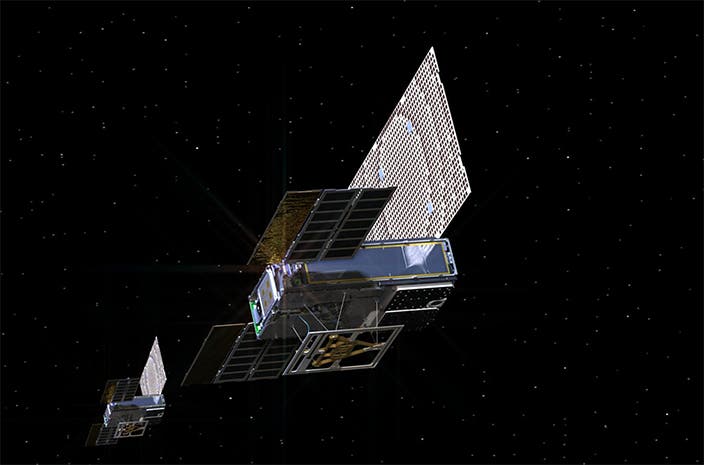NASA wanted to see if a generation of small, cheap satellites could survive the journey to deep space. Now, the first one already has Mars in its sights.

If you think satellites have to be expensive and bulky, think again. CubeSats are a type of miniaturized satellites used for space research, consisting of modules no larger than 10×10×10 cm (3.9×3.9×3.9 in). CubeSats often use off-the-shelf equipment and components and are relatively easy to design and build.
NASA’s MarCO mission, which stands for Mars Cube One, wanted to see whether CubeSats can withstand the challenges of deep space — and so far, so good.
MarCO-A and MarCO-B, the two satellites of the mission, have wide-angle cameras and basic communication equipment, which they will now put to good use. A wide-angle camera on top of MarCO-B produced the image above as a test of exposure settings. Mars may look like nothing more than a smidge of red light, but from 8 million miles (12.8 million kilometers) away, that’s quite a performance.

MarCO-B’s wide-angle camera looks straight out from the deck of the CubeSat. Parts of the satellite are visible on the sides of the image. Aside from the navigation and camera work, the satellite also had to be programmed to “turn” towards Mars — and engineers were excited that it worked smoothly.
“We’ve been waiting six months to get to Mars,” said Cody Colley, MarCO’s mission manager at JPL. “The cruise phase of the mission is always difficult, so you take all the small wins when they come. Finally seeing the planet is definitely a big win for the team.”
While this isn’t a remarkable achievement in itself, it shows that CubeSats are a viable technology for interplanetary missions, and feasible on a short development timeline, with surprisingly low resources and investment. This demonstration could lead to many other applications to explore and study our solar system.
Many have been made by university students or small companies and can be brought launched into Earth orbit using extra payload mass available on larger spacecraft.






